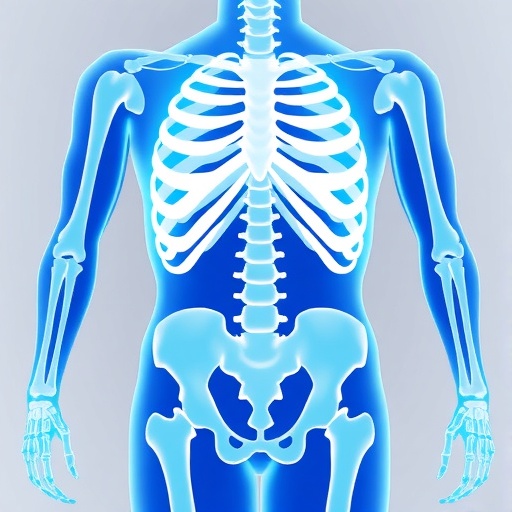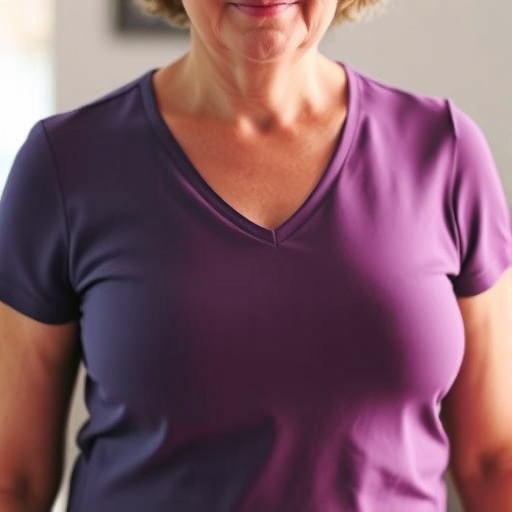Microtia, a congenital condition characterized by the underdevelopment of the outer ear, presents significant challenges not only aesthetically but also functionally. Traditional approaches to treating this condition often involve surgical reconstruction, which can yield inadequate results and carry inherent risks. However, a groundbreaking study led by researchers such as Núñez et al., published in the Annals of Biomedical Engineering, is paving the way for innovative treatment methodologies that leverage advancements in tissue engineering and scaffold design, offering hope for children suffering from this condition.
This research addresses a gap in existing treatment strategies for microtia by exploring the potential of biocompatible scaffolds and regenerative medicine techniques. Traditional methods mainly rely on using autologous cartilage from the patient’s rib cage, leading to pain, scarring, and other complications. However, the innovative approaches highlighted in this study focus on creating scaffolds that not only replicate the anatomical features of the ear but also encourage natural tissue regeneration. This paradigm shift could revolutionize how microtia is treated.
The essence of tissue engineering lies in its ability to integrate biology with materials science. In this context, the researchers have emphasized the importance of biocompatible scaffolds, which are designed to provide a structural framework that supports cell attachment, proliferation, and differentiation. These scaffolds are engineered from materials that can mimic the natural properties of ear cartilage, ultimately facilitating the growth of living tissues where they are placed. Advances in 3D printing technology have played a pivotal role in this development, allowing for precise scaffolding that meets the specific anatomical requirements of patients.
One of the key findings of the study is the identification of polysaccharides as promising candidates for scaffold materials. Polysaccharides have shown commendable biocompatibility and the ability to be easily manipulated into desired forms. Their natural origin also means they can provide a favorable environment for the embedding of cells, enhancing the potential for successful integration with the host tissue. This research indicates that optimizing the composition of scaffolds can improve not only the aesthetic outcomes but also the functional capabilities of the reconstructed ear.
Moreover, the study explores the inclusion of growth factors within the scaffolds. By embedding these biologically active molecules, it is possible to stimulate cellular activities that promote regeneration and repair. The synergistic effect of scaffolds combined with growth factors could enhance the healing process significantly, resulting in more resilient tissue formation. For instance, vascular endothelial growth factor (VEGF) is known to play a crucial role in angiogenesis, a fundamental process necessary for the survival of newly formed tissues.
The innovative approaches suggested in this research reflect a growing trend towards personalized medicine. As we move towards a future where treatments are tailored to the individual needs of patients, strategies that account for variations in anatomical features and biological responses are essential. The use of patient-derived cells in conjunction with custom-designed scaffolds poses an exciting opportunity for significantly improving treatment outcomes. By leveraging the patient’s own biological materials, the chances of rejection and complications associated with foreign materials could be drastically reduced.
As with any emerging technology, challenges remain. The scalability of scaffold production, ensuring consistency in quality, and maintaining structural integrity over time are crucial concerns that need to be addressed. Furthermore, long-term studies are necessary to evaluate the efficacy and safety of these innovative treatments fully. The transition from laboratory research to clinical application is fraught with hurdles but represents a critical step in transforming the landscape of microtia treatment.
An aspect that cannot be overlooked is the psychological impact of congenital ear deformities on patients and their families. The quest for aesthetic harmony is not merely superficial; it significantly influences self-esteem and social interactions. As these new treatment methodologies potentially provide better cosmetic results, the positive psychosocial implications for patients will be profound. Enhancing the quality of life for individuals with microtia is a core objective of this research.
Collaborative efforts between engineers, biologists, and medical professionals are integral to the success of these innovative treatments. By pooling expertise, diverse perspectives can be harnessed to create multifaceted approaches that address the complexities of treating microtia. This interdisciplinary collaboration aligns with the broader movement in healthcare that emphasizes integrated care models, which recognize the significant overlaps between engineering, biology, and clinical practices.
In conclusion, the advancements in tissue engineering and scaffold design as presented by Núñez and colleagues represent a beacon of hope for those affected by microtia. Their commitment to pushing the boundaries of traditional treatment methods and adopting a scientific approach underscores a transformative moment in biomedical engineering. As these technologies continue to evolve, they have the potential not only to change the treatment landscape for microtia but also to inspire innovations in other areas of regenerative medicine.
The broader implications of this research extend beyond the treatment of microtia alone. As the methodologies and principles developed in this study are applied to other congenital deformities and health conditions, the potential to improve surgical outcomes and enhance patient quality of life becomes increasingly evident. Embracing such advances requires a shift in clinical practice, regulatory support, and public acceptance, all of which are vital for patient access to these new therapies.
The journey of translating such innovations from the lab to the clinic is complex and requires sustained effort and investment. However, as researchers and clinicians work together to navigate these challenges, there is a palpable sense of optimism. The vision of a future where every child born with microtia can receive tailored, effective treatment is not merely a dream but is becoming an achievable reality through the dedicated research and innovative approaches in the sphere of tissue engineering.
Through harnessing cutting-edge technologies and a renewed focus on patient-centered care, the contributions from this research could very well shape the future of how we approach congenital conditions. The study by Núñez et al. serves as a clarion call for ongoing exploration, innovation, and application of scientific discoveries in the realm of medicine. The road ahead may be long, but the potential for transforming lives is undeniably immense.
Subject of Research: Microtia Treatment Innovation
Article Title: Innovative Approaches in Microtia Treatment: Advancements in Tissue Engineering and Scaffold Design
Article References:
Núñez, J.A.VL., Ocampo-Godínez, J.M., Vàzquez-Vàzquez, F.C. et al. Innovative Approaches in Microtia Treatment: Advancements in Tissue Engineering and Scaffold Design. Ann Biomed Eng (2025). https://doi.org/10.1007/s10439-025-03851-7
Image Credits: AI Generated
DOI:
Keywords: Tissue Engineering, Scaffold Design, Microtia, Regenerative Medicine, Biocompatibility
Tags: anatomical ear replica engineeringbiocompatible scaffolds in medicinechallenges in microtia surgerychildren’s healthcare advancementscongenital ear deformities solutionsear reconstruction techniquesmicrotia treatment advancementsregenerative medicine applicationsscaffolding in tissue regenerationsurgical reconstruction limitationstissue engineering innovations





